How Processed Food Became America’s Number One Health Risk
And how a simple definition gives MAHA a blueprint to make America healthy again
By Dr. Cate Shanahan, Special to The MAHA Report
“The greatest trick the devil ever played was convincing the world he didn’t exist.”
— [attributed to] Charles Baudelaire
The junk food industry has pulled off a similar sleight of hand. For decades, nutrition research has linked processed foods to obesity, diabetes, heart disease, cancer, dementia, mental health disorders, and more. But these same researchers fail to offer a definition of processed food rooted in the actual building blocks of these products.
Instead, they give us rating systems. For example, the Tuft’s Food Compass, which originally rated Lucky Charms as healthier than steak. That kind of “nutrition science” isn’t science at all. It’s policy by corporate influence, reinforced by captured agencies and well-funded university departments. Food corporations don’t want us to have a clear, actionable definition, because if we knew what to avoid, we just might avoid it.
That’s why defining processed food is a major priority for MAHA — and for HHS Secretary Robert F. Kennedy Jr., who recognizes that without clarity, real change is impossible. Monied interests don’t want consumers to know when they’re buying products loaded with cheap, junk-food ingredients. My interest is making it clear.
A Simple, Clear Definition
A dentist named Weston Price gave us a running start at a definition nearly 100 years ago after he traveled the world to discover what healthy people ate — and what they avoided. What he discovered was profound; where people followed traditional sustainable practices, they thrived. But where they abandoned these practices and started eating what he called “foods of modern commerce,” cavities eroded their teeth. The decay extended to every tissue in their bodies and opened them up to all manner of infection, deformity, and suffering. Price identified flours, sugars, and canned goods as the most problematic factors. And my work over the past 20 years has clarified the definition further.
In my 2024 book Dark Calories, I defined processed food as food that derives a significant portion of its calories from refined ingredients that no longer resemble anything found in nature. The main categories are:
1. Refined fats – seed oils like the Hateful Eight. These lack antioxidants, minerals, most vitamins, brain-building phospholipids, lecithin, choline, and pretty much everything except for calorie-rich triglyceride fatty acids.
2. Refined carbs – sugars and flours. These likewise lack most nutrients and represent empty calories.
3. Isolated proteins – powders, concentrates, and hydrolysates. These are basically empty-calorie amino acids.
These “refined macros” are industrial products, not whole foods. They are cheap to produce, easy to store, and highly profitable — which is why they dominate our diets today. This definition also offers MAHA and policymakers a practical framework to measure progress and hold industry accountable.
The Illusion of Choice
To the casual observer, supermarkets appear to offer us thousands of “choices.” But look closer and you’ll find the same three refined ingredients repeating over and over.
Processed food companies use them like building blocks to fashion our favorite snacks and cereals, everything from Cheerios to Cheez-Its. They’re the bulk of calories in junk foods. But they’re also main ingredients in foods intended to sustain life, like infant, toddler, and elder-care formulas, and meal replacements. Most ready-to-eat meals are also diluted with these filler ingredients.
We think we have options. But the fake colorings, artificial flavors, and textural variety create the illusion of choice where none exists. By the way, we feed our beloved pets the same stuff. Scan the labels on kibble and canned foods, and you’ll see seed oils, starchy fillers, and hydrolyzed proteins or isolates there, too.
Death By Refined Macros
It’s not really debatable that we can improve our health by avoiding these foods. What’s hotly debated is what makes them bad.
So far, blame has been laid on saturated fat, salt, cholesterol, or synthetic additives. But we’ve overlooked this fact: seventy percent of the average American’s calories now come from the three refined macros, leaving only 30 percent for real food.
My research, published in Frontiers in Nutrition this April, shows this diet drives oxidative stress — a state of chemical chaos where cells lose control of energy. Search any disease alongside “oxidative stress,” and you’ll see a link. I’ve dedicated my career to helping my patients and fellow physicians understand this connection because it’s the most powerful lever we have to bring about real healing. After years of abusing our bodies with the big three refined macros, when real food quells the oxidative stress, our bodies respond in miraculous ways.
The Road to Reform
If this were just about personal choice, we could fix it by shopping differently. But it’s not about individuals — it’s about a system. RFK Jr. and MAHA are fighting to reform that system from the ground up, creating policies that favor human life over shelf life.
The first step is the simplest: tell the truth about what processed food really is. Only then will real change become possible.
Making America healthy again will require rebuilding the chain of nourishment — from soil to cell — and it starts with defining processed food in these clear, simple, scientifically valid terms.
Dr. Cate Shanahan, MD (DrCate.com) is The New York Times bestselling author of Deep Nutrition, Food Rules, The Fatburn Fix, and, most recently, Dark Calories. You can follow her on X @DrCateShanahan


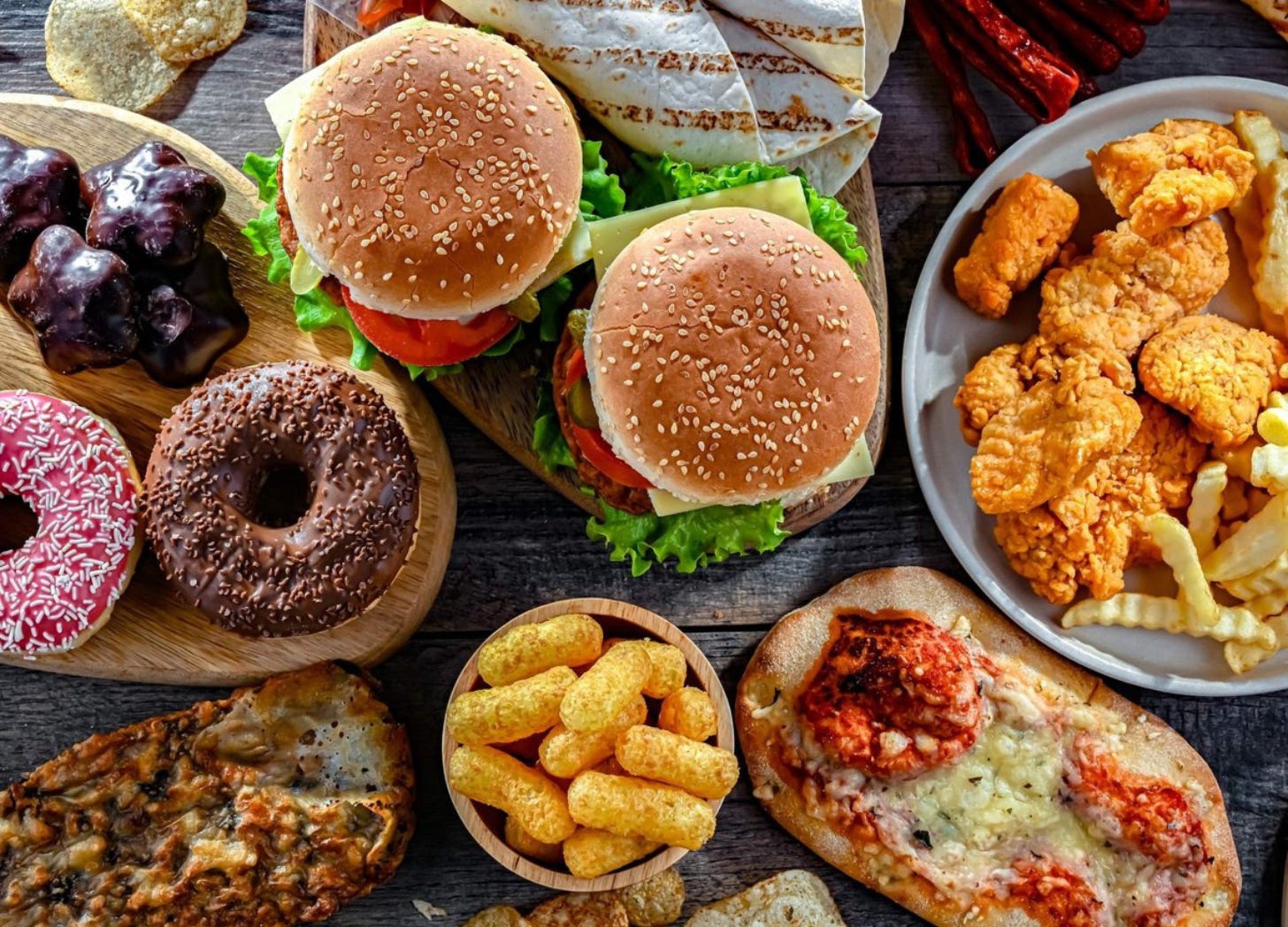
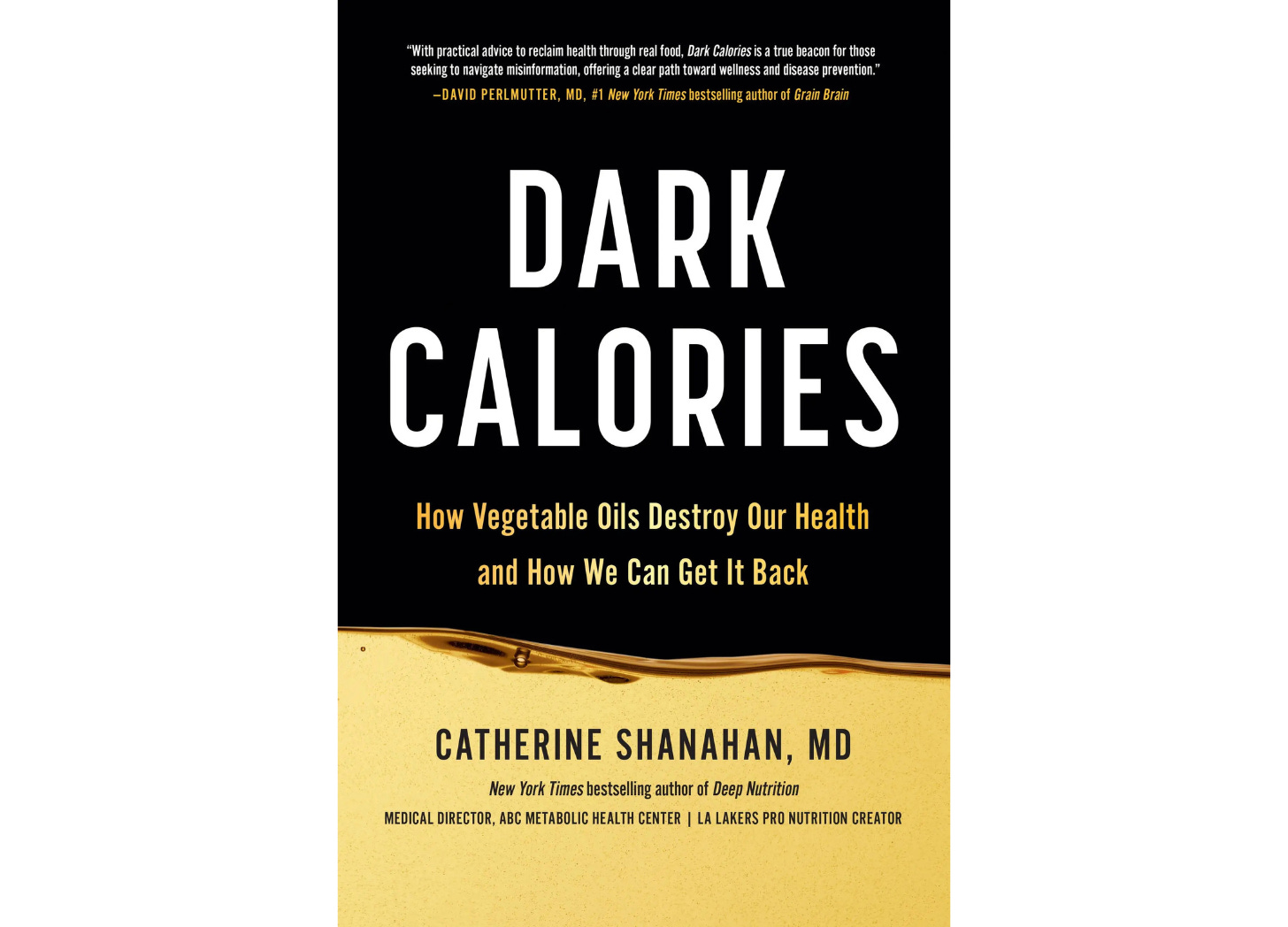
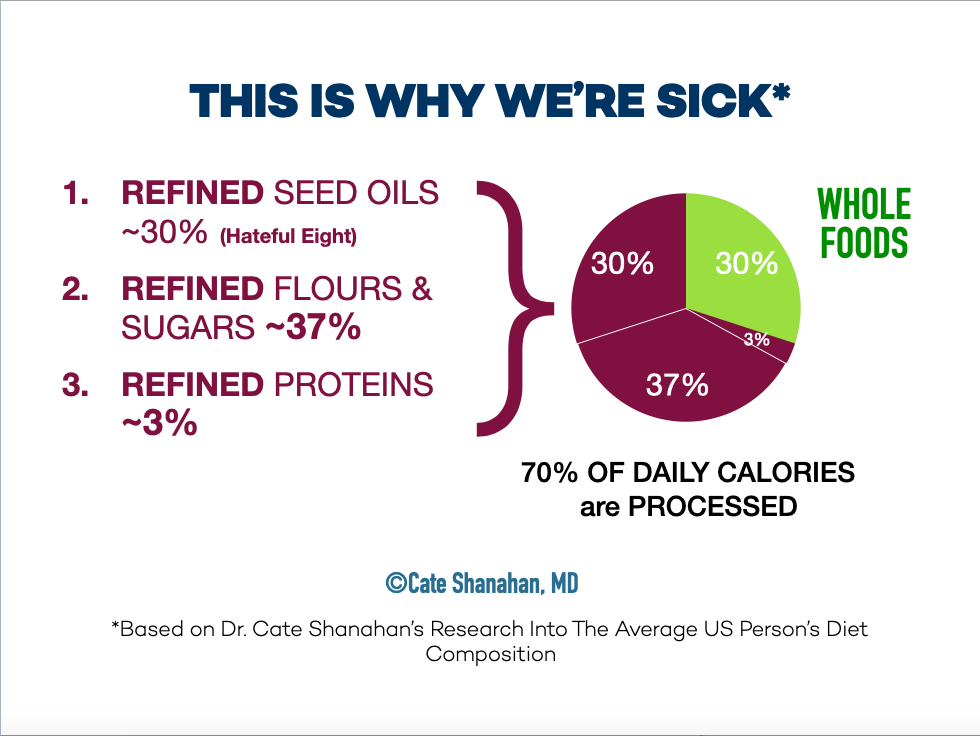
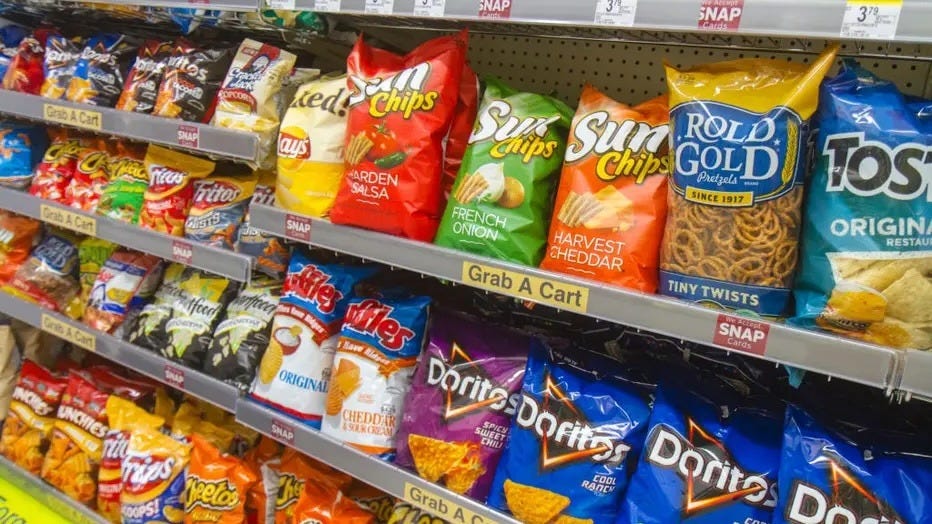
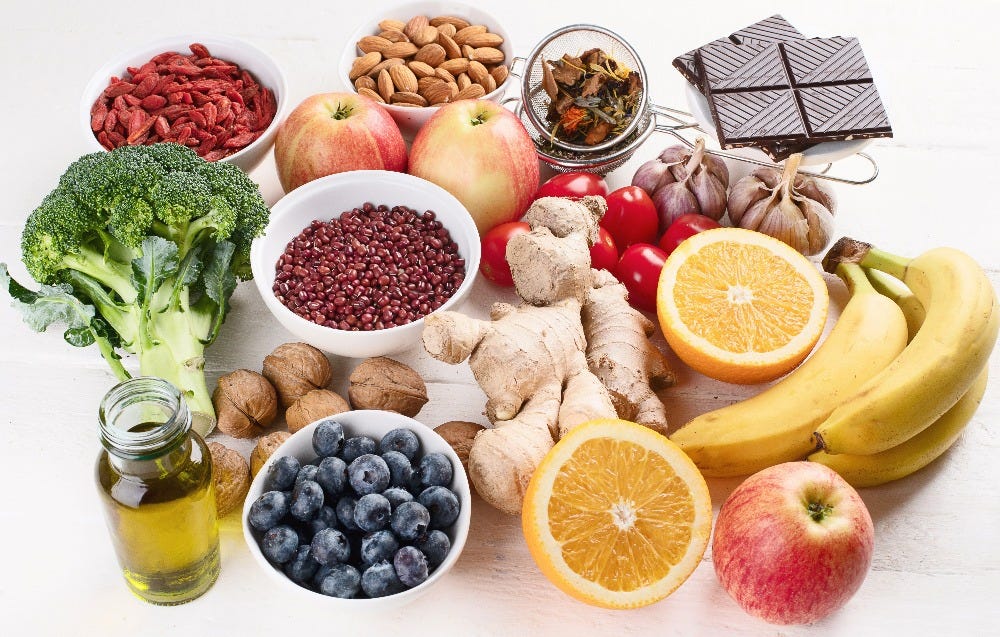
Over the last hundred years, we’ve added thousands of chemicals to our products and environment—yet we overlook nearly every one of them.
They’re not just in processed foods—they’re in our kitchen staples: lemon juice, baking powder, seasonings, dressings, hot sauce, pickles, relish, tortilla shells. They’re in our health and beauty products, over-the-counter drugs, supplements, and more.
We assume government agencies are watching over this, but they’re not. The FDA doesn’t actively test or monitor these chemicals; it relies on self-attestation from the companies that make them. No one is responsible. The blame has been shifted entirely to consumers—apparently, we’re supposed to somehow know what’s safe and what’s not. The term “FDA approved” when it comes to additives is a nearly meaningless adjective. Many years ago, chemicals began being introduced into our system under the label “generally recognized as safe,” but the truth is that thousands of these chemicals are not safe, and none ever get removed. Meaningful testing by any regulatory agency of these substances ended years ago.
Lobbying and money control the science. Unfortunately, our system has been captured by $cience.
"But we’ve overlooked this fact: seventy percent of the average American’s calories now come from the three refined macros, leaving only 30 percent for real food.
My research, published in Frontiers in Nutrition this April, shows this diet drives oxidative stress — a state of chemical chaos where cells lose control of energy. "
It is stunning that the details of chemical chaos never mentions genetically engineered crops, not one word about the novel proteins that impact our microbiome nor any note that every GMO is designed to tolerate 10 times the strength of glyphosate than the Roundup sprayed in home driveways.. no mention of Bt varieties of corn & soy designed to eat through the soft tissue of the insect after a few bites that can easily be extrapolated to a full spectrum of gastroesophageal reflux diseases (GERD) and digestive problems classed as diseases..
Swallowing poison is bad and nutrition advice that talks about seed oil and refined ingredients but ignores the population wide feeding experiment the Rockefeller-Gates Biotech Mafia have rolled out to have patent protected, fee based seed for industrial ag model is as bad as another box of Fruit Loops for better health. Shameful omission or tragic ignorance.
http://web.archive.org/web/20101122021318/www.fda.gov/Food/Biotechnology/Submissions/ucm161130.htm
Biotechnology Consultation Memorandum of Conference BNF No. 000001
September 19, 1994
Wholesomeness Studies
Monsanto described the results of wholesomeness studies they carried out in rats, chickens, catfish, dairy cattle, and bobwhite quail. On the basis of their consideration of the totality of these studies, Monsanto has concluded that there is no significant difference in the wholesomeness of glyphosate-tolerant and traditional soybean varieties, as expected from their compositional analysis. These data are summarized on page 49 of Monsanto's September 2 submission.
Conclusions
Monsanto has concluded, in essence, that the glyphosate-tolerant soybean variety they have developed is not significantly altered within the meaning of 21 CFR 170.30(f)(2) when compared to soybean varieties with a history of safe use. At this time, based on Monsanto's description of its data and analysis, the agency considers Monsanto's consultation on this product to be complete.
F. Owen Fields, Ph.D.